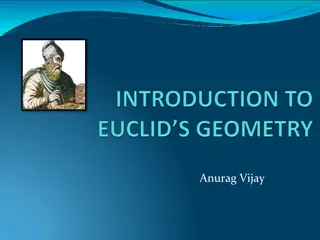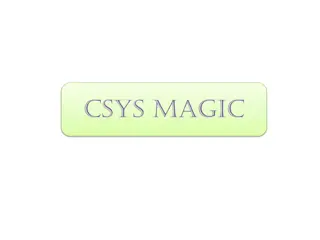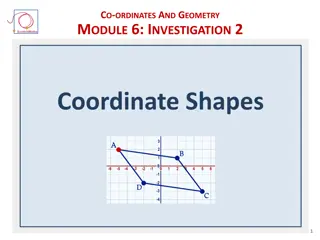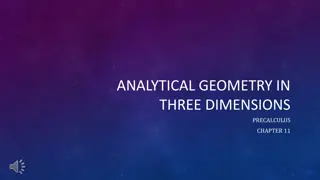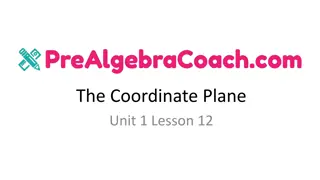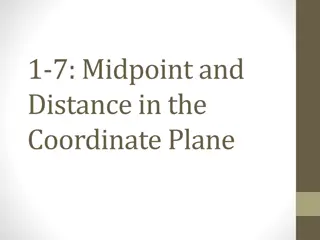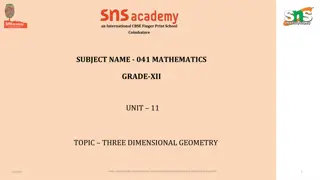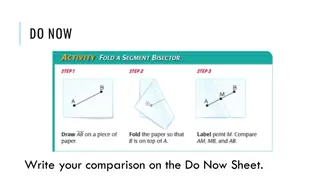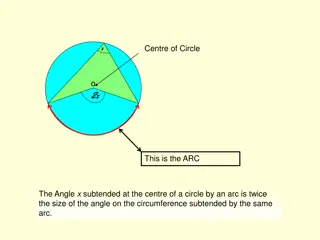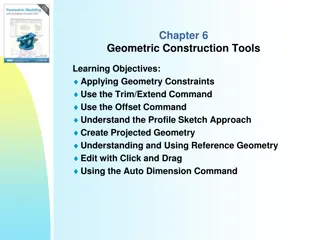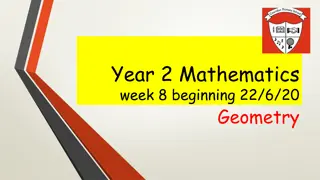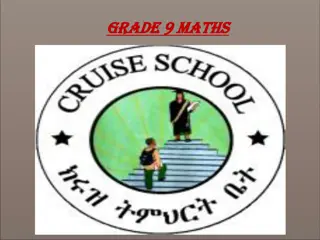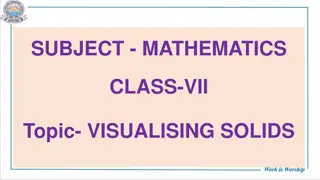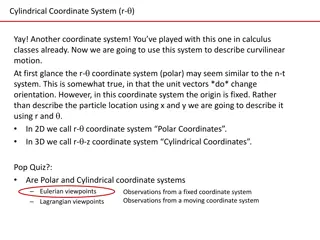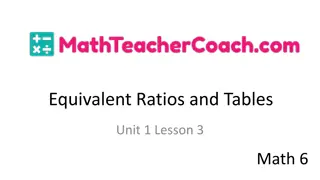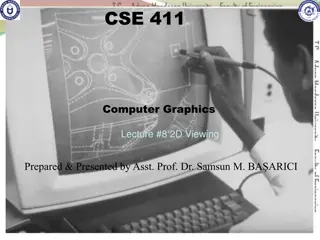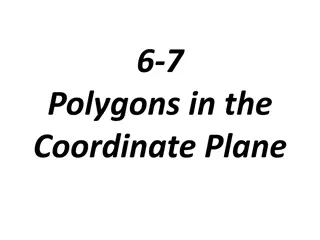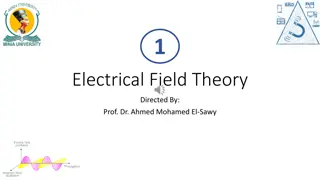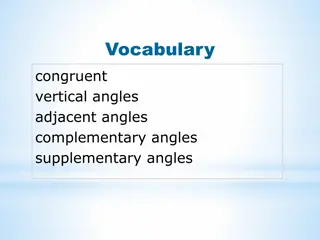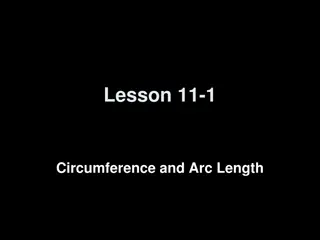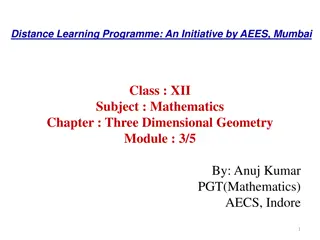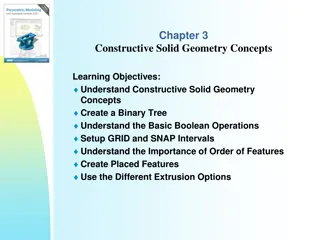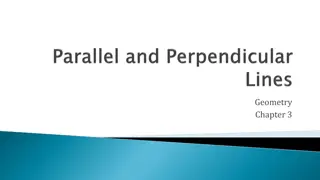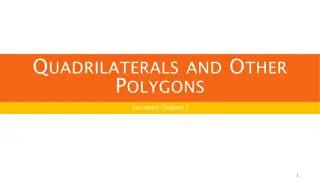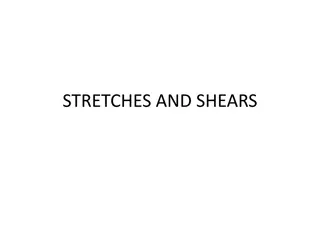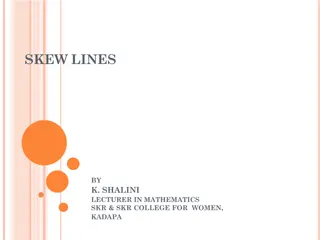Understanding Coordinate Geometry in Mathematics
Coordinate geometry, a system developed in 1637 by Descartes and Fermat, allows for locating points in a Cartesian plane using x and y coordinates. This concept involves recalling coordinate axes, plotting points, understanding quadrants, and solving real-life problems. The history, introduction, and components like x-axis, y-axis, and coordinate plane are essential in learning this mathematical concept.
Download Presentation

Please find below an Image/Link to download the presentation.
The content on the website is provided AS IS for your information and personal use only. It may not be sold, licensed, or shared on other websites without obtaining consent from the author. Download presentation by click this link. If you encounter any issues during the download, it is possible that the publisher has removed the file from their server.
E N D
Presentation Transcript
DAV INSTITUTIONS ODISHA ZONE-1 DAV PUBLIC SCHOOL UNIT-VIII,BBSR CLASS-IX MATHEMATICS CO-ORDINATE GEOMETRY Prepared by Mr. Duryodhan Prusty
Learning Objectives Students will be able to 1. recall co-ordinate axes. 2. locate position of a point for the given co-ordinates in the Cartesian plane. 3. know about the quadrants to which the Cartesian plane is divided by co-ordinate axes. 4. plot a point in the Cartesian plane. 5. solve problems in daily life situation using co-ordinate points.
HISTORY The idea of this system was developed in 1637 in writings by Descartes and independently byPierrede Fermat, although Fermatalsoworked in threedimensionsand did notpublish thediscovery. Bothauthorsused asingleaxis in theirtreatmentsand haveavariablelength measured inreferencetothisaxis. Theconceptof usingapairof axes was introduced later, after Descartes' La G om trie was translated into Latin in 1649 by Frans van Schootenand his students. These commentators introduced several concepts while trying to clarify the ideas contained in Descartes'work.
PIERRE DE FERMAT RENE DECARTES Rene Decartes (1596-1950)
INTRODUCTION Coordinate Geometry or the system of coordinate geometry has been derived fromthecorrespondenceof thepointsonthenumberlineand real number. A very unique number coordinate can be represented on a number line and any of the real number can be located on the number line. The number line representsthewholeof thereal number. Bythewayof theconvectionthenumber line is a horizontal placed line at its right hand side the positive Numbers are placed and on the left hand sidethenegative numberareplaced and they bothare separated bythe0 orwe cansayzero isplaced in themiddleof them.
COORDINATE PLANE A two-dimensional surface on which points are plotted and located by their x and y coordinates It has two scales, called the x-axis and y-axis, at right angles to each other. The plural of axis is 'axes' (pronounced "AXE-ease"). Points on the plane are located using two numbers the x and y coordinates. These are the horizontal and vertical distances of the point from a specific location called the origin.
X axis The horizontal scale is called the x-axis. As you go to the right on the scale from zero, thevaluesarepositiveand get larger.Asyougotothe left fromzero, theyget moreand morenegative. Y axis Thevertical scale iscalled the y-axis.Asyougoup fromzerothe numbersare increasing ina positivedirection.Asyougodown fromzerotheyget moreand more negative.
Origin The point where the two axes cross (at zero on both scales) is called the origin. The origin is thepointfromwhichall distancesalong thex and y axesare measured. Quadrants The two axes divide the plane into four areas called quadrants. The first quadrant, by convention,is thetopright,and then theygoaroundcounter- clockwise.They are labelled Quadrant 1,2 etc. It is conventional to label them with numerals but we talk about them as "first, second, third, and fourth quadrant". They are also sometimes labelled with Roman numerals: I, II, III andIV .
USES OF COORDINATE GEOMETRY IN OUR DAY TO DAY LIFE: IN LOCATING PLACES/GEOGRAPHY
Cartesian System Cartesian System Example 1 : See Fig. 3.11 and complete the following statements: (i) The abscissa and the ordinate of the point B are ___and ____, respectively. Hence, the coordinates of B are (__, ___). (ii) The x-coordinate and the y-coordinate of the point M are ___and ___, respectively. Hence, the coordinates of M are (___, ___). (iii) The x-coordinate and the y-coordinate of the point L are ___ and ____, respectively. Hence, the coordinates of L are (___, __). (iv) The x-coordinate and the y-coordinate of the point S are ___and ___, respectively. Hence, the coordinates of S are (__, ___).
SOLUTION OF EXAMPLE 1 Solution : (i) Since the distance of the point B from the y - axis is 4 units, the x - coordinate or abscissa of the point B is 4. The distance of the point B from the x - axis is 3 units; therefore, the y - coordinate, i.e., the ordinate, of the point B is 3. Hence, the coordinates of the point B are (4, 3). (ii) The x - coordinate and the y - coordinate of the point M are 3 and 4, respectively. Hence, the coordinates of the point M are ( 3, 4). (iii) The x - coordinate and the y - coordinate of the point L are 5 and 4, respectively. Hence, the coordinates of the point L are ( 5, 4). (iv) The x - coordinate and the y- coordinate of the point S are 3 and 4, respectively. Hence, the coordinates of the point S are (3, 4).
Cartesian System Cartesian System Example:1 See Fig.3.14, and write the following: I. The coordinates of B. II. The coordinates of C. III. The point identified by the coordinates ( 3, 5). IV. The point identified by the coordinates (2, 4). V. The abscissa of the point D. VI. The ordinate of the point H. VII. The coordinates of the point L. VIII. The coordinates of the point M.
Solution of Example 1: Solution of Example 1: The coordinates of B is (-5,2) The coordinates of C is (5,-5) III. The point identified by the coordinates ( 3, 5) is E IV. The point identified by the coordinates (2, 4) is G V. The abscissa of the point D is 6 VI. The ordinate of the point H is -3 VII. The coordinates of the point L is (0,5) VIII. The coordinates of the point M is (-3,0) I. II.
Plotting a Point in the Plane if its Coordinates are Given Let us see a short video how to plot a point in Cartesian plane https://youtu.be/lQFNDoxd5eU Example 2 : Locate the points (5, 0), (0, 5), (2, 5), (5, 2), ( 3, 5), ( 3, 5), (5, 3) and (6, 1) in the Cartesian plane. Solution: Taking 1cm = 1unit, we draw the x - axis and the y - axis. The positions of the points are shown by dots
Summary In this chapter, you have studied the following points : To locate the position of an object or a point in a plane, we require two perpendicular lines. One of them is horizontal, and the other is vertical. The plane is called the Cartesian, or coordinate plane and the lines are called the coordinate axes. The horizontal line is called the x -axis, and the vertical line is called the y - axis. The coordinate axes divide the plane into four parts called quadrants. The point of intersection of the axes is called the origin.
Summary The distance of a point from the y - axis is called its x-coordinate, or abscissa, and the distance of the point from the x-axis is called its y-coordinate, or ordinate. If the abscissa of a point is x and the ordinate is y, then (x, y) are called the coordinates of the point. The coordinates of a point on the x-axis are of the form (x, 0) and that of the point on the y-axis are (0, y). The coordinates of the origin are (0, 0). 10. The coordinates of a point are of the form (+ , +) in the first quadrant, ( , +) in the second quadrant, ( , ) in the third quadrant and (+, ) in the fourth quadrant, where + denotes a positive real number and denotes a negative real number. If x y, then (x, y) (y, x), and (x, y) = (y, x), if x = y.
MIND MAP Co-ordinate geometry



